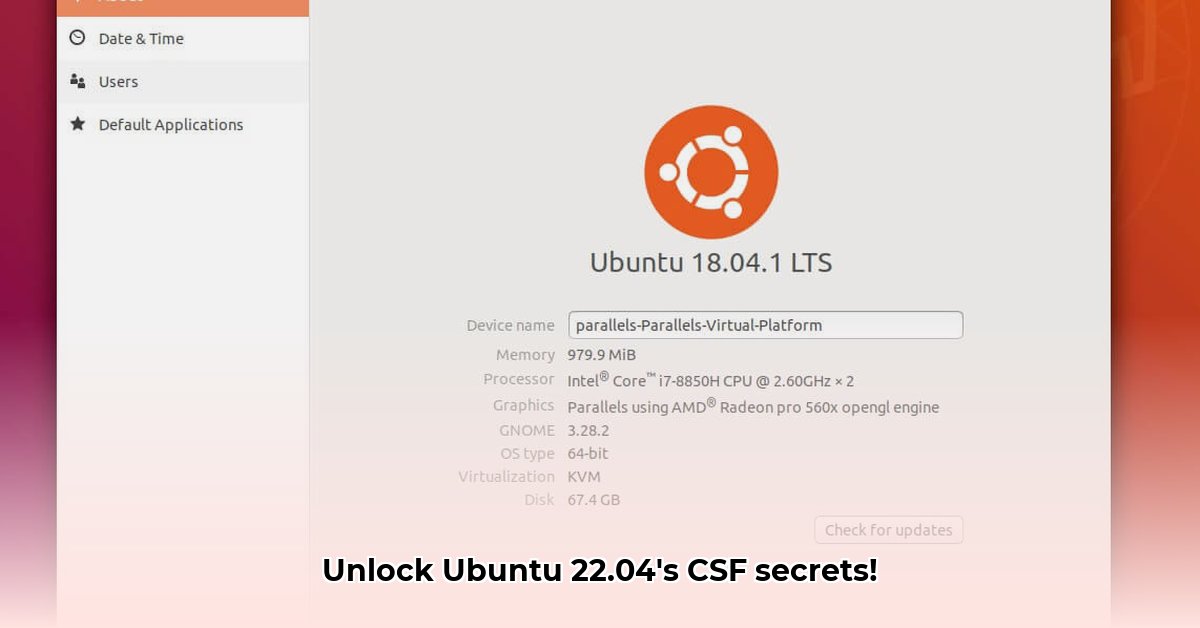
This guide provides multiple methods to check your ConfigServer Security & Firewall (CSF) version on Ubuntu 22.04, crucial for maintaining optimal server security. We'll cover the most efficient techniques, troubleshoot potential problems, and highlight best practices.
Method 1: Using dpkg (Most Reliable)
This method directly queries your system's package manager for the CSF version. It's the most reliable way to obtain the precise version number.
- Open your terminal: Press Ctrl+Alt+T.
- Execute the command: Type the following and press Enter:
dpkg -l | grep csf
- Interpret the output: If CSF is installed, you'll see a line similar to this:
ii csf 2.44-1ubuntu1 amd64 Advanced security filter
The version number (e.g., 2.44-1ubuntu1) is highlighted in this example. If no output is shown, CSF is not installed on your system.
Method 2: Checking the CSF Configuration Directory
This quick method verifies CSF's installation without specifying the version number.
- Open your terminal.
- Execute the command: Type the following and press Enter:
ls -l /etc/csf/
- Analyze the results: The presence of files like
csf.confindicates that CSF is installed. However, this doesn't reveal the version.
Method 3: Verifying CSF Service Status with systemctl
This method confirms whether CSF is running as a service; it doesn't display the version.
- Open your terminal.
- Execute the command: Type and press Enter:
systemctl status csf
- Check the status: Look for an output indicating "active (running)". If CSF is not running, it might be due to configuration issues or installation problems.
Method 4: Locating the CSF Executable with which
This rapid check confirms CSF's installation but doesn't provide the version.
- Open your terminal.
- Execute the command: Type the following and press Enter:
which csf
- Interpret the output: A path like
/usr/sbin/csfconfirms CSF's installation. The absence of output implies it's not installed.
Choosing the Right Method: A Comparison
| Method | Pros | Cons |
|---|---|---|
dpkg | Precise version number; most reliable. | Requires basic command-line knowledge. |
| Configuration Directory | Quick installation check; easy to use. | Doesn't show the version number. |
systemctl | Quickly checks service status. | Doesn't show the version number. |
which | Fast installation confirmation. | Doesn't provide the version number. |
For precise version information, dpkg is the recommended method. Other methods offer quick checks for CSF's presence and operational status.
Troubleshooting CSF Issues
Knowing your CSF version is key to troubleshooting issues. An outdated version might be the source of your problems.
Identifying Your CSF Version (Alternative Method)
If dpkg fails, use this alternative:
apt list --installed | grep csf
This command utilizes the APT package manager to verify the CSF version.
Further Troubleshooting Steps:
Check CSF Logs: Examine
/var/log/csf/csf.logfor error messages and clues about problems (tail -f /var/log/csf/csf.logdisplays real-time logs).Review
csf.conf: Carefully inspect this configuration file for any misconfigurations, particularly port settings.Use the
csfCommand: Utilize commands likecsf -d(disable),csf -e(enable), and remember to test changes usingTESTING=1incsf.confbefore fully implementing them.Restart CSF and LFD: After any configuration changes, restart CSF (
csf -r) and LFD (systemctl restart lfd).Verify Network Connectivity: Ensure that essential services remain functional after making changes.
Consult the CSF Documentation: Refer to the official CSF documentation (https://configserverfirewall.com/csf.html) for detailed assistance.
Keeping your CSF updated is paramount for robust server security. Using these methods, you can effectively monitor your CSF version and address any potential issues promptly.